
venom s.


Now it’s time for the other half of the story, as AMD unveils Socket AM3 with its support for 1333MHz DDR3 system memory.
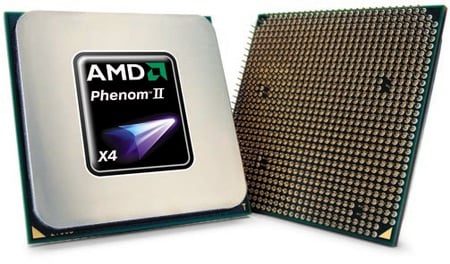
AMD's Phenom II: now with DDR 3 support
AMD has launched five new models of Socket AM3 Phenom II, with three models in both retail and tray packaging, and two models that are only available in trays for system builders. The retail parts are:
While the two tray parts are:
Because these are tray parts we do not have prices. But here are AMD's official specs for the parts:
| Model Number | Frequency | L3 Cache Size | Nominal Voltage | OPN(s) |
| X4 810 | 2.6GHz | 4MB | 0.875-1.425V | Tray: HDX810WFK4FGI PIB: HDX810WFGIBOX |
| X3 720 BE | 2.8GHz | 6MB | 0.850-1.425V | Tray: HDZ720WFK3DGI PIB: HDZ720WFGIBOX |
| X3 710 | 2.6GHz | 6MB | 0.875-1.425V | Tray: HDX710WFK3DGI PIB: HDX710WFGIBOX |
| X4 910 | 2.6GHz | 6MB | 0.875-1.425V | Tray: HDX910WFK4DGI |
| X4 805 | 2.5GHz | 4MB | 0.875-1.425V | Tray: HDX805WFK4FGI |
Common AM3 Processor Specifications
L1 Cache Sizes 64KB of instruction and 64KB of data cache per core (512KB total L1 per processor)
L2 Cache Sizes 512KB of data cache per core (2MB total L2 per processor for X4s, 1.5MB total L2 per processor for X3s)
Memory Controller Type Integrated 128-bit wide memory controller
Memory Controller Speed Up to 2.0GHz with Dual Dynamic Power Management
Types of Memory Supported Support for unregistered DIMMs up to PC2 8500 (DDR 2 1066MHz) and PC3 (DDR3 1333MHz)
HyperTransport 3.0 Link: One 16-bit/16-bit link @ up to 4.0GHz full duplex (2.0GHz x2)
Total Processor Bandwidth Up to 33.1GB/s total bandwidth
Packaging Socket AM3 938-pin organic micro pin grid array (micro-PGA)
Process Technology 45nm DSL SOI (silicon-on-insulator) technology
Approximate Transistor count 758 million
Approximate Die Size 258mm²
Max Ambient Case Temp - X4 CPUs 71° C
Max Ambient Case Temp - X3 CPUs 73° C
Max TDP 95W

| ATHLONType | PGA-ZIF | ||||||||||
|---|---|---|---|---|---|---|---|---|---|---|---|
| Chip form factors | OPGA | ||||||||||
| Contacts | 754 | ||||||||||
| FSB frequency | 200 MHz System clock 800 MHz HyperTransport | ||||||||||
| Voltage range | Voltage range 0.8 - 1.55 V Socket 754 was the original socket for AMD's Athlon 64 desktop processors. Due to the introduction of newer socket layouts (i.e. Socket 939, Socket 940 and Socket AM2), Socket 754 has become the more "budget-minded" socket for use with AMD Athlon 64 or Sempron processors. In comparison, it differs from Socket 939 in several areas:
Although AMD has promoted Socket 754 as a budget platform on the desktop and encouraged mid and high end users to use newer platforms, Socket 754 remained for some time as AMD's high end solution for mobile applications, (e.g. the HP zv6000 series). However, Socket S1 has been released and is slated to supersede Socket 754 in the mobile CPU segment through its support for dual core CPUs and DDR2 SDRAM.
| ||||||||||






 | Driver Download |
|---|---|
Version | 8.22 |
Date of release | 2006/5/22 |
File Size | 39.9MB |
OS | WindowsXP/2000 |
Description | |
Ethernet NRM driver version 50.09 (WHQL) | |
Network management tools version 50.09 | |
SMBus driver version 4.50 (WHQL) | |
Installer version 4.93 | |
Win2K IDE SATARAID driver version 6.22 (WHQL) | |
Win2K IDE SATA_IDE driver version 6.22 (WHQL) | |
Win2K RAIDTOOL application version 6.22 | |
WinXP IDE SATARAID driver version 6.22 (WHQL) | |
WinXP IDE SATA_IDE driver version 6.22 (WHQL) | |
WinXP RAIDTOOL application version 6.22 | |
Description | nVidia VGA Driver |
Version | ForceWare 93.71 WHQL |
Date of release | 2006/11/3 |
File Size | 61.4MB |
OS | WindowsXP/2000 |
 | Manual Download |
Description | Manual |
Version | 1.0506 |
Date of release | 2006/5/22 |
File Size | 2.0MB |
OS | ALL |

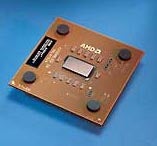 AMD has won its game of "cache up" with Intel. The newest Athlon XP processors, code-named Barton, have double the Level 2 cache of previous models. Our first tests show the results: Barton-based Athlon XP 3000+ systems flew through productivity work, just topping the fastest Pentium 4 systems we've tested. AMD-based PCs also continue to triumph in the pricing contest, often selling for hundreds less than comparably configured P4 computers.
AMD has won its game of "cache up" with Intel. The newest Athlon XP processors, code-named Barton, have double the Level 2 cache of previous models. Our first tests show the results: Barton-based Athlon XP 3000+ systems flew through productivity work, just topping the fastest Pentium 4 systems we've tested. AMD-based PCs also continue to triumph in the pricing contest, often selling for hundreds less than comparably configured P4 computers.

Proven Radeon™ graphics powering DirectX® 10Powered by ATI Radeon™ Graphics, DirectX® 10 introduces neverbefore-seen detail-rich images and dynamic interactivity for playing the latest DirectX® 10 games
HyperTransport™ 3.0 technologyMore than doubles your CPU communications bandwidth to graphics as compared to HyperTransport™ 1
PCI Express® Generation 2.0Double your graphics bandwidth over earlier PCI Express for improved performance
Backwards compatibilityEnsures flexibility to build platforms with previous generation CPUs as well as the latest AMD Phenom™ processors
ATI Hybrid Graphics1Improve your system performance by enabling the ability for both discrete graphics and integrated graphics to render simultaneously
ATI Avivo™ HD2ATI Avivo™ HD is the advanced image and video processing and display technology found in ATI Radeon™ graphics that enables:
brilliant colors, sharp images and smooth playback of Blu-ray™ and HD DVD content
performance that rivals high end HD DVD and Blu-ray™ players on difficult 1080i content
built-in HDMI and DVI with HDCP
ATI PowerPlay™Flexible power saving technologies that ensure optimal power efficiency to help reduce your electricity costs
Low Power DesignDesigned for power-efficient computing to help lower energy costs
AMD Cool’nQuiet™ 2.0Benefit from power saving features that help reduce power consumption at idle or during low usage
Enhanced Digital Display integrationSupports Display Port interface for the newest displays.
ATI SurroundView™SurroundView™ feature allows support for up to four independent monitors for systems equipped with an additional Radeon™ discrete graphics card
Next Generation SB700Support for up to 12 USB 2.0 connections and 6 SATA 2.0 devices, including eSATA devices
AMD OverDrive*Shift your system performance into next gear. Enables control of the AMD 7-Series Chipsets to easily configure system settings in Microsoft® Windows®
AMD RAIDXpert™Easily configure your RAID setup from remote locations to personalize your media for extra performance or enhanced reliability
2nd Generation NVIDIA® Unified ArchitectureThe 240 enhanced processor cores that provide incredible shading horsepower is achieved via delivery of the second generation architecture with 50% more gaming performance over the first generation.
NVIDIA PhysX™ ReadyGeForce GPU support for NVIDIA PhysX technology - enabling a totally new class of physical gaming interaction for a more dynamic and realistic experience with GeForce. The PhysX processor is noted for being specifically designed to accelerate dynamic physical motion and interaction in games such as Ghost Recon Advanced Warfighter 2 (GRAW 2).
NVIDIA® Unified ArchitectureFully unified shader core dynamically allocates processing power to geometry, vertex, physics or pixel shading operations, delivering up to 2X the gaming performance of prior generation GPUs
GigaThread™ TechnologyMassively multi-threaded architecture supports thousands of independent, simultaneous threads, providing extreme processing efficiency in advanced, next generation shader programs
NVIDIA® SLI™ technologyDelivers up to 2X the performance of a single graphics card configuration for unequaled gaming experiences by allowing two cards to run in parallel. The must-have feature for performance PCI Express graphics, SLI technology dramatically scales performance on today’s hottest games
NVIDIA® Lumenex™ EngineDelivers stunning image and floating point accuracy at ultra-fast frame rate
16x Anti-aliasingLightning fast, high quality anti-aliasing at up to 16x sample rates obliterates jagged edges
128-bit floating point High Dynamic-Range (HDR) Twice the precision of prior generations for incredibly realistic lighting effects-now with support for anti-aliasing
NVIDIA® Quantum Effect™ Technology Advanced shader processors architected for physics computation enable a new level of physics effects to be simulated and rendered on the GPU-all while freeing the CPU to run the game engine and AI
NVIDIA® ForceWare® unified Driver Architecture (UDA) Delivers a proven record of compatibility, reliability and stability with the widest range of games and applications. ForceWare ensures the best out-of-box experience for every user and delivers continuous performance and feature updates over the life of NVIDIA GeForce GPUs
OpenGL® 2.0 Optimizations and Support Ensures top-notch compatibility and performance for Open GL applications.
NVIDIA® nView Multi-Display Technology Advanced technology provides the ultimate in viewing flexible and control for multiple monitors.
PCI Express SupportDesigned to run perfectly with the PCI Express bus architecture, which doubles the bandwidth of AGP 8X to deliver over 4 GB/sc in both upstream and downstream data transfer
Built for Microsoft® Windows VistaNvidia’s fourth-generation GPU architecture built for Windows Vista gives users the best possible experience with the Windows Aero 3D graphical user interface
NVIDIA® PureVideo™ technologyThe combination of high-definition video decode acceleration and post-processing that delivers unprecedented picture clarity, smooth video, accurate color and precise image scaling for movies and video
ProductInno3D Geforce GT240
Processor Cores96
Graphics Clock (MHz)550
Processor Clock (MHz)1340
Memory Clock (MHz)3400MHz GDDR5 / 1580MHz SDDR3 / 1400MHz GDDR3
Memory Amount512MB / 1GB
Memory Interface 128-bit
Memory Bandwidth (GB/sec)-
Texture Fill Rate (billion/sec) -
1. A PCI-Express compliant motherboard with full size expension slot2. 6-pin PCI Express supplementary power connector3. Minimum 400W or greater system power supply (with 12V current rating of 25A)
Note: 1. PCB, components, specification and packing are subjected to change without notice
AC_FL_RunContent('flashVars', 'widgetVersion=vertical&widgetLanguage=en-us','src', 'http://www.nvidia.com/content/DriverDownload/widget/v2/driver_widget','width', '320','height', '620','align', 'middle','id', 'driver_widget','quality', 'high','bgcolor', '#869ca7','name', 'driver_widget','wmode', 'transparent','allowScriptAccess','sameDomain','type', 'application/x-shockwave-flash','pluginspage', 'http://www.adobe.com/go/getflashplayer');



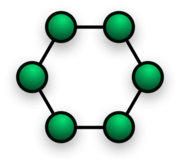








 CATEGORY 5 PATCH CABLE
CATEGORY 5 PATCH CABLE
*A patch cable is an electrical or optical cable, used to connect one electronic or optical device to another for signal routing. Devices of different types (ie: a switch connected to a computer, or switch to router) are connected with patch cords. It is a very fast connection speed. Patch cords are usually produced in many different colors so as to be easily distinguishable.
> Cat5E cable Over molded Boots, Cat6 Patch cable Over molded Boots, Cat5F patch cable No boots, Flat Black satin RJ45 cable
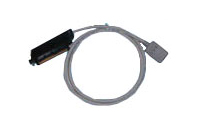
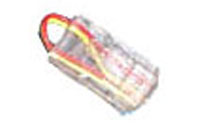
 audio Video cable
audio Video cable  computer cable
computer cable networking cable
networking cable